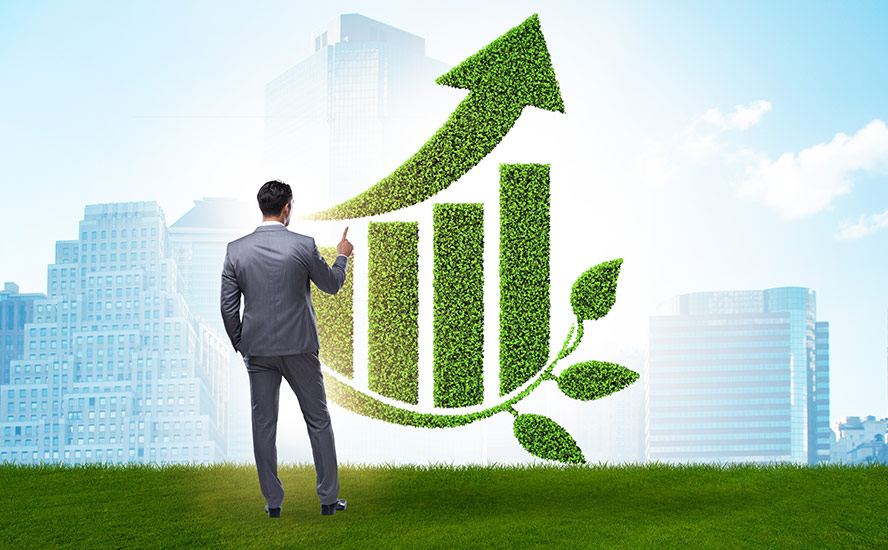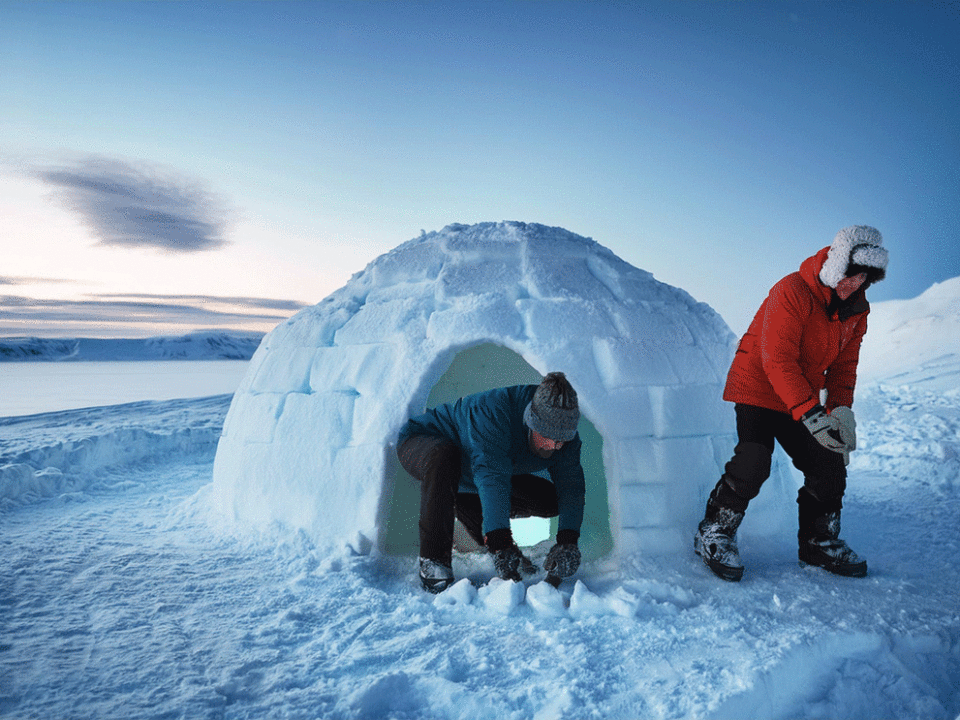Top 5 reasons to invest in the green economy
2022.05.01
The green economy is one of the most important buzzwords of the 21st century. It refers to an economy aimed at reducing environmental risks and ecological scarcities, while achieving “sustainable development”, another well-worn term.
The green economy fits hand in glove with ESG, as shareholders and institutional investors demand that companies place more emphases on environmental, social and governance issues.
To be green, an economy must not only be efficient, but fair, implying a just transition to an economy that is low carbon, resource efficient and socially inclusive.
All well and good, but as Kevin O’Leary of ‘Dragon’s Den’ fame stated on more than once occasion, “how do I make money?” Below are our top five reasons for investing in the green economy.
- New commodity super-cycle
Analysts including Goldman Sachs’ global head of commodities research Jeff Currie have repeatedly stated that we are bearing witness to the beginning of a decade-long “commodity super-cycle”.
Unlike the last cycle, driven by China’s hunger for fuels, metals, building materials and foodstuffs, this new commodity super-cycle will be fueled by “green” metals needed for technologies that mitigate the negative effects of climate change.
Indeed, the transition towards a “green economy” can only be accomplished with renewable power, electric vehicles and energy storage technologies.
All of these require lots of minerals. In fact, the amount of raw materials we’ll need to extract from the Earth to feed this green energy transition is staggering.
According to BloombergNEF, it would take 10,252 tons of aluminum, 3,380 tons of polysilicon and 18.5 tons of silver to manufacture solar panels with a 1GW (gigawatt) capacity.
Wind turbines need steel, copper, aluminum, nickel and other materials. To construct wind infrastructure with the power capacity of one gigawatt, BNEF found that 154,352 tons of steel, 2,866 tons of copper and 387 tons of aluminum would be needed.
For lithium-ion batteries, the key metals are copper, aluminum, lithium, nickel, cobalt and manganese. BNEF estimates that it would take 1,731 tons of copper, 1,202 tons of aluminum, and 729 tons of lithium to manufacture 1GWh (gigawatt-hour) batteries.
All in all, BNEF estimates that the global transition will require about $173 trillion in energy supply and infrastructure investment over the next three decades; until then, every commodity under the sun will be gobbled up.
The need for metals that feed into the new commodity super-cycle is just one reason to invest in the green economy. Below are four others we have identified.
- Climate change
The climate on planet Earth is changing, and a lot faster than many had anticipated.
Droughts are impacting food production in Canada and the United States, lowering crop yields, and causing ranchers to cull part of their herds. Stubbornly high natural gas prices are being reflected in record-high fertilizer costs. Lake Mead, America’s largest manmade reservoir, and a source of water for millions, just fell to an unprecedented low.
A 2017 research paper found that each degree Celsius increase would on average reduce global yields of wheat by 6%, rice by 3.2%, maize by 7.4% and soybeans by 3.1%. These foods provide two-thirds of human caloric intake.
A new study showed more than a fifth of global food output growth has been lost to climate change since the 1960s, putting an estimated 34 million people on the brink of famine.
Not to be glib, but with crisis comes opportunity. Among the agricultural commodities that have risen sharply due to a combination of climate change and the war in Ukraine, are the three most important food staples — rice, corn and wheat.
Mined commodities that we can draw a straight line to, from climate change, include EV battery metals lithium, graphite, nickel, cobalt and manganese. As evidence of global warming mounts, the greater the incentive to accelerate the shift to carbon-free electric vehicles and sources of electricity, raising the demand for these metals.
Also in the mix are palladium and platinum, platinum group metals used to make catalytic converters that filter pollutants from traditional vehicles. Gas-powered cars and hybrids are considered to be transitional technologies, as automakers shift to fully electric models.
Climate change plays into shortages for certain metals, described in detail below. In Chile, for example, drought conditions in the country’s arid north are forcing mining companies to desalinate water for mineral processing. The added cost pressure is affecting production, leading to higher metal prices.
BMO estimates the top copper-producing country’s 2022 production has slowed to a pace where it could be lower than 2004, when mine output was slightly over 5.4 million tonnes, equivalent to just 37% of the world’s production.
Beyond rising metal and crop prices, that attract investors, clean energy is obviously good for the environment. A 2020 report from the Environmental Defense Fund and Datu Research found the number of annual severe weather disasters has increased four-fold since 1980, costing US taxpayers more than $1.75 trillion.
According to EDF, Multiple analyses reveal that stimulus support for key elements of a clean economy is a smart way to generate good-paying jobs that can help lift the US out of the recession and sustain long term growth. One study found that clean energy investments create three times more jobs than an equivalent investment in fossil fuels.
- Green infrastructure
The new super-cycle being touted by Goldman Sachs and others is tied to the infrastructure deficits many countries need to try to reduce.
In many places around the world, basic infrastructure such as roads, bridges, water & sewer systems, etc. have all been poorly maintained, and require hefty investments — measured in trillions of dollars. To bring them up to the standards of a modern economy, more spending will be needed on things like smart power grids, 5G and high-speed rail.
China, the world’s biggest commodities consumer, has committed to spending at least 14.8 trillion yuan (US$2.3 trillion) this year on thousands of “major projects”, according to Bloomberg reports.
The US is looking to keep up, with its own trillion-dollar infrastructure package, which will be spent on roads, bridges, power & water systems, transit, rail, electric vehicles, and upgrades to broadband, airports, ports and waterways, among many other items.
For such plans to work, they will need an extensive amount of minerals to build the required infrastructure, and will have to compete with one another (plus every other country) to do so, driving commodity prices higher.
It’s no wonder that analysts are now super-bullish on commodities.
- China
Despite keeping a lower profile when it comes to commodities consumption than during the last super-cycle, from 2003-11, arguably China will continue to need more commodities than the rest, for traditional infrastructure (think roads, bridges, airports, etc.), green projects needing a broad range of electrification/ decarbonization metals, and to feed an expanding, and evolving, manufacturing base.
Now that the country has done all it needs to do to urbanize, and having acquired the metals, indeed locked up most of the world’s minerals, to build the infrastructure for its “Belt and Road Initiative”, China’s next mission is to become the world’s high-tech manufacturing hub.
Previously, building more highways, railways and airports, the traditional “blacktop infrastructure” were seen as a way to stabilize the economy, but they resulted in a large increase in local government debts amid unregulated spending sprees.
Beijing has therefore taken steps to prevent these debts and is advocating for so-called “new infrastructure”, including 5G, ultra-high-voltage power transmission, big data centers, industrial internet and artificial intelligence.
Towards this goal, the Ministry of Finance has allocated US$188 billion worth of bonds, that local authorities are urged to issue, to fund construction projects and to leverage private investment.
Not only has China outspent the United States and led the world on infrastructure investments, it has also worked relentlessly over the past decade to lock up the world’s metals, creating import dependencies for a number of key minerals in the US and other Western countries.
- Metal shortages
Referring to the Bloomberg Commodity Spot Index, which hit a new record earlier this year, driven in part by surging oil prices, Goldman Sach’s Jeff Currie said he’s never seen commodity markets pricing in the shortages they are right now.

“I’ve been doing this 30 years and I’ve never seen markets like this,” the commodity expert said in a Bloomberg TV interview. This is a molecule crisis. We’re out of everything, I don’t care if it’s oil, gas, coal, copper, aluminum, you name it we’re out of it.”
Lingering supply chain issues from covid and the war in Ukraine have made these pressures even stronger.
Nickel prices spiked following the invasion of Ukraine by Russia, a major supplier of the base metal through state-owned miner Norilsk.
As far as transitioning to a green economy, we still have ways to go, because at the current rate, the supply of almost every mineral on Earth is under threat.
Copper, for example, is seeing its cupboard dry up thanks to a dearth of new discoveries and lack of capital spending on mine development in recent years. Analytics firm S&P Global predicts that due to a shortage of projects, copper supply will lag demand as soon as 2025.
In 20 years, BloombergNEF says copper miners need to double the amount of global copper production, just to meet the demand for a 30% penetration rate of electric vehicles — from the current 20Mt a year to 40Mt.
Remember, copper is already one of the most consumed industrial metals on the planet, and the bellwether for the global economy. The commodity will always be in great demand, and the threat of a decades-long supply shortage should keep its price elevated.
Another commodity garnering increased attention is lithium, the key ingredient in electric vehicle batteries. Many have predicted that the EV revolution would eventually strip away our supply of the metal, and this year, it looks like this will finally happen.
Further demand growth in EV sales will mean a lithium deficit this year as use of the material outstrips production and depletes stockpiles, predicts S&P Global.
According to its December report, supply is forecast to jump to 636,000 tonnes of lithium carbonate equivalent in 2022, up from an estimated 497,000 in 2021 — but demand will jump even higher to 641,000 tonnes, from an estimated 504,000 tonnes. Lithium carbonate prices in China have nearly doubled this year, a signal that a demand-supply gap is imminent.
Many other commodities, from battery minerals like nickel, cobalt and graphite to oil and natural gas, are also surging, with supply concerns and disruptions hitting every corner of the global economy.
Prices for these metals have already been rising for awhile, but we (and others) believe they have much further to go. As stock markets churn due to the war, weak earnings from the tech giants, inflation, and rising interest rates, now would be an excellent time to examine your options for making a long-term investment in the green economy.
Richard (Rick) Mills
aheadoftheherd.com
subscribe to my free newsletter
Legal Notice / Disclaimer
Ahead of the Herd newsletter, aheadoftheherd.com, hereafter known as AOTH.
Any AOTH/Richard Mills document is not, and should not be, construed as an offer to sell or the solicitation of an offer to purchase or subscribe for any investment.

Legal Notice / Disclaimer
Ahead of the Herd newsletter, aheadoftheherd.com, hereafter known as AOTH.Please read the entire Disclaimer carefully before you use this website or read the newsletter. If you do not agree to all the AOTH/Richard Mills Disclaimer, do not access/read this website/newsletter/article, or any of its pages. By reading/using this AOTH/Richard Mills website/newsletter/article, and whether you actually read this Disclaimer, you are deemed to have accepted it.



























